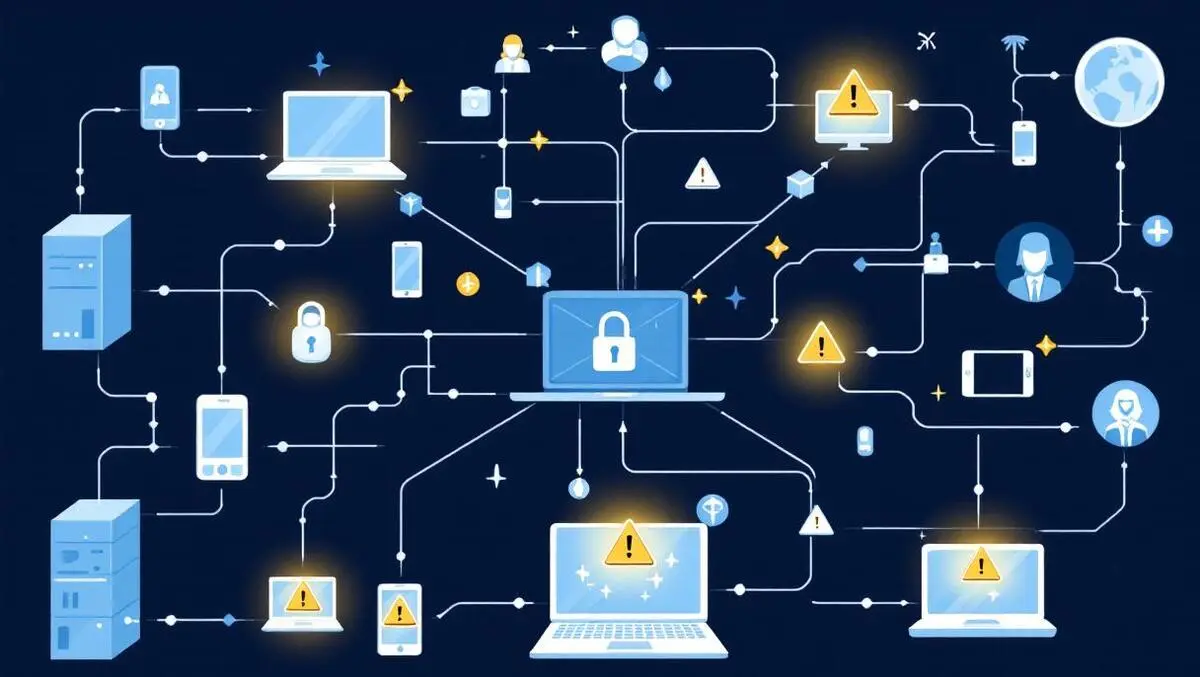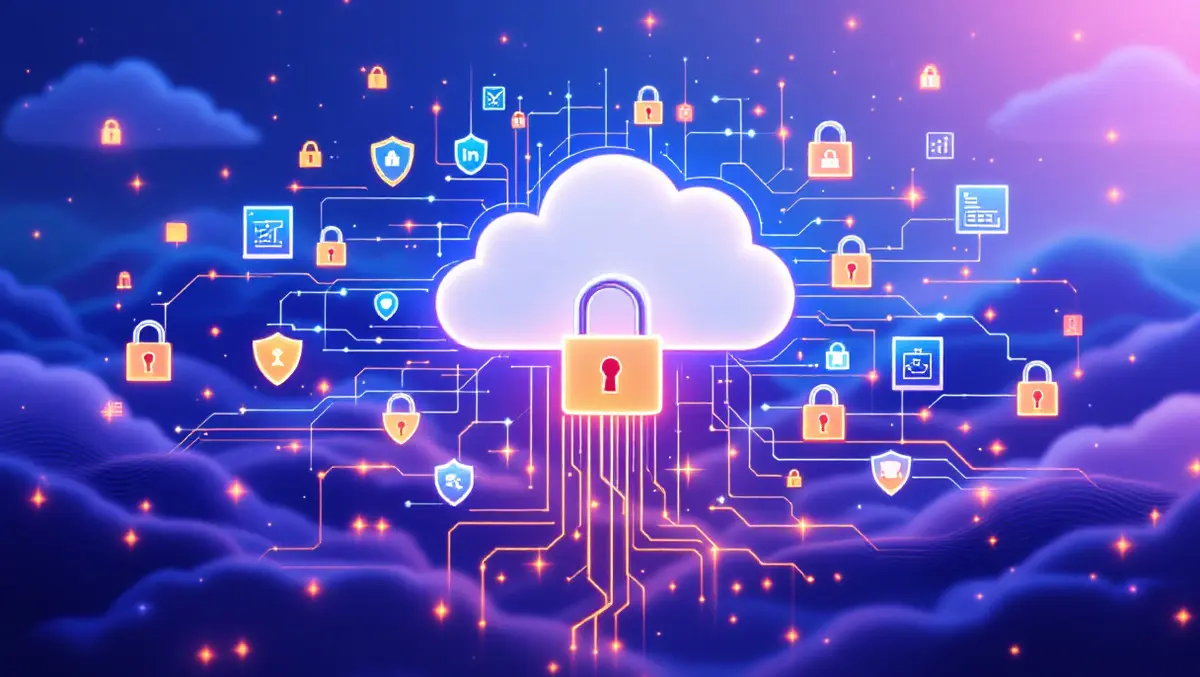Quote for the day:
"The pain you feel today will be the strength you feel tomorrow." -- Anonymous
Proactive threat intelligence boosts security & resilience
 Threat intelligence is categorised into four key areas, each serving a unique
purpose within an organisation. Strategic intelligence provides executives with
a high-level overview, covering broad trends and potential impacts on the
business, including financial or reputational ramifications. This level of
intelligence guides investment and policy decisions. Tactical intelligence is
aimed at IT managers and security architects. It details the tactics,
techniques, and procedures (TTPs) of threat actors, assisting in strengthening
defences and optimising security tools. Operational intelligence is important
for security operations centre analysts, offering insights into imminent or
ongoing threats by focusing on indicators of compromise (IoCs), such as
suspicious IP addresses or file hashes. Finally, technical intelligence concerns
the most detailed level of threat data, offering timely information on IoCs.
While valuable, its relevance can be short-lived as attackers frequently change
tactics and infrastructure. ... Despite these benefits, many organisations face
significant hurdles. Building an in-house threat intelligence capability is
described as requiring a considerable investment in specialised personnel,
tools, and continual data analysis. For small and mid-sized organisations, this
can be a prohibitive challenge, despite the increasing frequency of targeted
attacks by sophisticated adversaries.
Threat intelligence is categorised into four key areas, each serving a unique
purpose within an organisation. Strategic intelligence provides executives with
a high-level overview, covering broad trends and potential impacts on the
business, including financial or reputational ramifications. This level of
intelligence guides investment and policy decisions. Tactical intelligence is
aimed at IT managers and security architects. It details the tactics,
techniques, and procedures (TTPs) of threat actors, assisting in strengthening
defences and optimising security tools. Operational intelligence is important
for security operations centre analysts, offering insights into imminent or
ongoing threats by focusing on indicators of compromise (IoCs), such as
suspicious IP addresses or file hashes. Finally, technical intelligence concerns
the most detailed level of threat data, offering timely information on IoCs.
While valuable, its relevance can be short-lived as attackers frequently change
tactics and infrastructure. ... Despite these benefits, many organisations face
significant hurdles. Building an in-house threat intelligence capability is
described as requiring a considerable investment in specialised personnel,
tools, and continual data analysis. For small and mid-sized organisations, this
can be a prohibitive challenge, despite the increasing frequency of targeted
attacks by sophisticated adversaries.Data Is a Dish Best Served Fresh: “In the Wild” Versus Active Exploitation
 Combating internet-wide opportunistic exploitation is a complex problem, with
new vulnerabilities being weaponized at an alarming rate. In addition to the
staggering increase in volume, attackers are getting better at exploiting
zero-day vulnerabilities via APTs and criminals or botnets at much higher
frequency, on a massive scale. The amount of time between disclosure of a new
vulnerability and the start of active exploitation has been drastically
reduced, leaving defenders with little time to react and respond. On the
internet, the difference between one person observing something and everyone
else seeing it is often quantified in just minutes. ... Generally speaking, a
lot of work goes into weaponizing a software vulnerability. It’s deeply
challenging and requires advanced technical skill. We tend to sometimes forget
that attackers are deeply motivated by profit, just like businesses are. If
attackers think something is a dead end, they won’t want to invest their time.
So, investigating what attackers are up to via proxy is a good way to
understand how much you need to care about a specific vulnerability. ... These
targeted attacks threaten to circumvent existing defense capabilities and
expose organizations to a new wave of disruptive breaches. In order to
adequately protect their networks, defenders must evolve in response.
Ultimately, there is no such thing and a set-and-forget single source of truth
for cybersecurity data.
Combating internet-wide opportunistic exploitation is a complex problem, with
new vulnerabilities being weaponized at an alarming rate. In addition to the
staggering increase in volume, attackers are getting better at exploiting
zero-day vulnerabilities via APTs and criminals or botnets at much higher
frequency, on a massive scale. The amount of time between disclosure of a new
vulnerability and the start of active exploitation has been drastically
reduced, leaving defenders with little time to react and respond. On the
internet, the difference between one person observing something and everyone
else seeing it is often quantified in just minutes. ... Generally speaking, a
lot of work goes into weaponizing a software vulnerability. It’s deeply
challenging and requires advanced technical skill. We tend to sometimes forget
that attackers are deeply motivated by profit, just like businesses are. If
attackers think something is a dead end, they won’t want to invest their time.
So, investigating what attackers are up to via proxy is a good way to
understand how much you need to care about a specific vulnerability. ... These
targeted attacks threaten to circumvent existing defense capabilities and
expose organizations to a new wave of disruptive breaches. In order to
adequately protect their networks, defenders must evolve in response.
Ultimately, there is no such thing and a set-and-forget single source of truth
for cybersecurity data. Quietly Fearless Leadership for 4 Golden Signals
 Most leadership mistakes start with a good intention and a calendar invite.
We’ve learned to lead by subtraction. It’s disarmingly simple: before we
introduce a new ritual, tool, or acronym, we delete something that’s already
eating cycles. If we can’t name what gets removed, we hold the idea until we
can. The reason’s pragmatic: teams don’t fail because they lack initiatives;
they fail because they’re full. ... As leaders, we also protect deep work. We
move approvals to asynchronous channels and time-box them. Our job is to reduce
decision queue time, not to write longer memos. Subtraction leadership signals
trust. It says, “We believe you can do the job without us narrating it.” We
still set clear constraints—budgets, reliability targets, security
boundaries—but within those, we make space. ... Incident leadership isn’t a
special hat; it’s a practiced ritual. We use the same six steps every time so
people can stay calm and useful: declare, assign, annotate, stabilize, learn,
thank. One sentence each: we declare loudly with a unique ID; we assign an
incident commander who doesn’t touch keyboards; we annotate a live timeline; we
stabilize by reducing blast radius; we learn with a blameless writeup; we thank
the humans who did the work. Yes, every time. We script away friction. A tiny
helper creates the channel, pins the template, and tags the right folks, so no
one rifles through docs when cortisol’s high.
Most leadership mistakes start with a good intention and a calendar invite.
We’ve learned to lead by subtraction. It’s disarmingly simple: before we
introduce a new ritual, tool, or acronym, we delete something that’s already
eating cycles. If we can’t name what gets removed, we hold the idea until we
can. The reason’s pragmatic: teams don’t fail because they lack initiatives;
they fail because they’re full. ... As leaders, we also protect deep work. We
move approvals to asynchronous channels and time-box them. Our job is to reduce
decision queue time, not to write longer memos. Subtraction leadership signals
trust. It says, “We believe you can do the job without us narrating it.” We
still set clear constraints—budgets, reliability targets, security
boundaries—but within those, we make space. ... Incident leadership isn’t a
special hat; it’s a practiced ritual. We use the same six steps every time so
people can stay calm and useful: declare, assign, annotate, stabilize, learn,
thank. One sentence each: we declare loudly with a unique ID; we assign an
incident commander who doesn’t touch keyboards; we annotate a live timeline; we
stabilize by reducing blast radius; we learn with a blameless writeup; we thank
the humans who did the work. Yes, every time. We script away friction. A tiny
helper creates the channel, pins the template, and tags the right folks, so no
one rifles through docs when cortisol’s high.
Private AI is the Future of BFSI Sector: Here’s Why
The public cloud, while offering initial scalability, presents significant hurdles for the Indian BFSI sector. Financial institutions manage vast troves of sensitive data. Storing and processing this data in a shared, external environment introduces unacceptable cyber risks. This is particularly critical in India, where regulators like the Reserve Bank of India (RBI) have stringent data localisation policies, making data sovereignty non-negotiable. ... Private AI offers a powerful solution to these challenges by creating a zero-trust, air-gapped environment. It keeps data and AI models on-premise, allowing institutions to maintain absolute control over their most valuable assets. It complies with regulatory mandates and global standards, mitigating the top barriers to AI adoption. The ability to guarantee that sensitive data never leaves the organisation’s infrastructure is a competitive advantage that public cloud offerings simply cannot replicate. ... For a heavily-regulated industry like BFSI, reaching such a level of automation and complying with regulations is quite the challenge. Private AI knocks it out of the park, paving the way for a truly secure and autonomous future. For the Indian BFSI sector, this means a significant portion of clerical and repetitive tasks will be handled by these AI-FTEs, allowing for a strategic redeployment of human capital into supervisory roles, which will, in turn, flatten organisational structures and boost retention.Cyber moves from back office to boardroom – and investors are paying attention
 Greater awareness has emerged as businesses shift from short-term solutions
adopted during the pandemic to long-term, strategic partnerships with specialist
cyber security providers. Increasingly, organizations recognize that cyber
security requires an integrated approach involving continuous monitoring and
proactive risk management. ... At the same time, government regulation is
putting company directors firmly on the hook. The UK’s proposed Cyber Security
and Resilience Bill will make senior executives directly accountable for
managing cyber risks and ensuring operational resilience, bringing the UK closer
to European frameworks like the NIS2 Directive and DORA. This is changing how
cyber security is viewed at the top. It’s not just about ticking boxes or
passing audits. It is now a central part of good governance. For investors,
strong cyber capabilities are becoming a mark of well-run companies. For
acquirers, it’s becoming a critical filter for M&A, particularly when
dealing with businesses that hold sensitive data or operate critical systems.
This regulatory push is part of a broader global shift towards greater
accountability. In response, businesses are increasingly adopting governance
models that embed cyber risk management into their strategic decision-making
processes.
Greater awareness has emerged as businesses shift from short-term solutions
adopted during the pandemic to long-term, strategic partnerships with specialist
cyber security providers. Increasingly, organizations recognize that cyber
security requires an integrated approach involving continuous monitoring and
proactive risk management. ... At the same time, government regulation is
putting company directors firmly on the hook. The UK’s proposed Cyber Security
and Resilience Bill will make senior executives directly accountable for
managing cyber risks and ensuring operational resilience, bringing the UK closer
to European frameworks like the NIS2 Directive and DORA. This is changing how
cyber security is viewed at the top. It’s not just about ticking boxes or
passing audits. It is now a central part of good governance. For investors,
strong cyber capabilities are becoming a mark of well-run companies. For
acquirers, it’s becoming a critical filter for M&A, particularly when
dealing with businesses that hold sensitive data or operate critical systems.
This regulatory push is part of a broader global shift towards greater
accountability. In response, businesses are increasingly adopting governance
models that embed cyber risk management into their strategic decision-making
processes.
Why satellite cybersecurity threats matter to everyone
There are several practices to keep in mind for developing a secure satellite architecture. First, establish situational awareness across the five segments of space by monitoring activity. You cannot protect what you cannot see, and there is limited real-time visibility into the cyber domain, which is critical to space operations. Second, be threat-driven when mitigating cyber risks. Vulnerability does not necessarily equal mission risk. It is important to prioritize mitigating those vulnerabilities that impact the particular mission of that small satellite. Third, make every space professional a cyber safety officer. Unlike any other domain, there are no operations in space without the cyber domain. Emotionally connecting the safety of the cyber domain to space mission outcomes is imperative. When designing a secure satellite architecture, it is critical to design with the probability of cyber security compromises front of mind. It is not realistic to design a completely “non-hackable” architecture. However, it is realistic to design an architecture that balances protection and resilience, designing protections that make the cost of compromise high for the adversary, and resilience that makes the cost of compromise low for the mission. Security should be built in at the lowest abstraction layer of the satellite, including containerization, segmentation, redundancy and compartmentalization.Tiny quantum dots unlock the future of unbreakable encryption
 For four decades, the holy grail of quantum key distribution (QKD) -- the
science of creating unbreakable encryption using quantum mechanics -- has hinged
on one elusive requirement: perfectly engineered single-photon sources. These
are tiny light sources that can emit one particle of light (photon) at a time.
But in practice, building such devices with absolute precision has proven
extremely difficult and expensive. To work around that, the field has relied
heavily on lasers, which are easier to produce but not ideal. These lasers send
faint pulses of light that contain a small, but unpredictable, number of photons
-- a compromise that limits both security and the distance over which data can
be safely transmitted, as a smart eavesdropper can "steal" the information bits
that are encoded simultaneously on more than one photon. ... To prove it wasn't
just theory, the team built a real-world quantum communication setup using a
room-temperature quantum dot source. They ran their new reinforced version of
the well-known BB84 encryption protocol -- the backbone of many quantum key
distribution systems -- and showed that their approach was not only feasible but
superior to existing technologies. What's more, their approach is compatible
with a wide range of quantum light sources, potentially lowering the cost and
technical barriers to deploying quantum-secure communication on a large
scale.
For four decades, the holy grail of quantum key distribution (QKD) -- the
science of creating unbreakable encryption using quantum mechanics -- has hinged
on one elusive requirement: perfectly engineered single-photon sources. These
are tiny light sources that can emit one particle of light (photon) at a time.
But in practice, building such devices with absolute precision has proven
extremely difficult and expensive. To work around that, the field has relied
heavily on lasers, which are easier to produce but not ideal. These lasers send
faint pulses of light that contain a small, but unpredictable, number of photons
-- a compromise that limits both security and the distance over which data can
be safely transmitted, as a smart eavesdropper can "steal" the information bits
that are encoded simultaneously on more than one photon. ... To prove it wasn't
just theory, the team built a real-world quantum communication setup using a
room-temperature quantum dot source. They ran their new reinforced version of
the well-known BB84 encryption protocol -- the backbone of many quantum key
distribution systems -- and showed that their approach was not only feasible but
superior to existing technologies. What's more, their approach is compatible
with a wide range of quantum light sources, potentially lowering the cost and
technical barriers to deploying quantum-secure communication on a large
scale.Are regulatory frameworks fueling innovation or stalling expansion in the data center market?
On a basic level, demonstrating the broader value of a data center to its host market, whether through job creation or tax revenues, helps ensure alignment with evolving regulatory frameworks and reinforces confidence among financial institutions. From banks to institutional investors, visible community and policy alignment help de-risk these capital-intensive projects and strengthen the case for long-term investment. ... With regulatory considerations differing significantly from region to region, data center market growth isn’t linear. In the Middle East, for example, where policy is supportive and there is significant capital investment, it's somewhat easier to build and operate a data center than in places like the EU, where regulation is far more complex. Taking the UAE as an example, regulatory frameworks in the GCC around data sovereignty require data of national importance to be stored in the country of origin. ... In this way, the regulatory and data sovereignty policies are driving the need for localized data centers. However, due to the borderless nature of the digital economy, there is also a growing need for data centers to become location-agnostic, so that data can move in and out of regions with different regulatory frameworks and customers can establish global, not just local, hubs.Cross border seamless travel Is closer than you think
 At the heart of this transformation is the Digital Travel Credential (DTC),
developed by the International Civil Aviation Organization (ICAO). The DTC is a
digital replica of your passport, securely stored and ready to be shared at the
tap of a screen. But here’s the catch: the current version of the DTC packages
all your passport information – name, number, nationality, date of birth – into
one file. That works well for border agencies, who need the full picture. But
airlines? They typically only require a few basic details to complete check-in
and security screening. Sharing the entire passport file just to access your
name and date of birth isn’t just inefficient and it’s a legal problem in many
jurisdictions. Under data protection laws like the EU’s GDPR, collecting more
personal information than necessary is a breach. ... While global standards take
time to update, the aviation industry is already moving forward. Airlines,
airports, and governments are piloting digital identity programs (using
different forms of digital ID) and biometric journeys built around the
principles of consent and minimal data use. IATA’s One ID framework is central
to this momentum. One ID defines how a digital identity like the DTC can be used
in practice: verifying passengers, securing consent, and enabling a paperless
journey from curb to gate.
At the heart of this transformation is the Digital Travel Credential (DTC),
developed by the International Civil Aviation Organization (ICAO). The DTC is a
digital replica of your passport, securely stored and ready to be shared at the
tap of a screen. But here’s the catch: the current version of the DTC packages
all your passport information – name, number, nationality, date of birth – into
one file. That works well for border agencies, who need the full picture. But
airlines? They typically only require a few basic details to complete check-in
and security screening. Sharing the entire passport file just to access your
name and date of birth isn’t just inefficient and it’s a legal problem in many
jurisdictions. Under data protection laws like the EU’s GDPR, collecting more
personal information than necessary is a breach. ... While global standards take
time to update, the aviation industry is already moving forward. Airlines,
airports, and governments are piloting digital identity programs (using
different forms of digital ID) and biometric journeys built around the
principles of consent and minimal data use. IATA’s One ID framework is central
to this momentum. One ID defines how a digital identity like the DTC can be used
in practice: verifying passengers, securing consent, and enabling a paperless
journey from curb to gate.


































